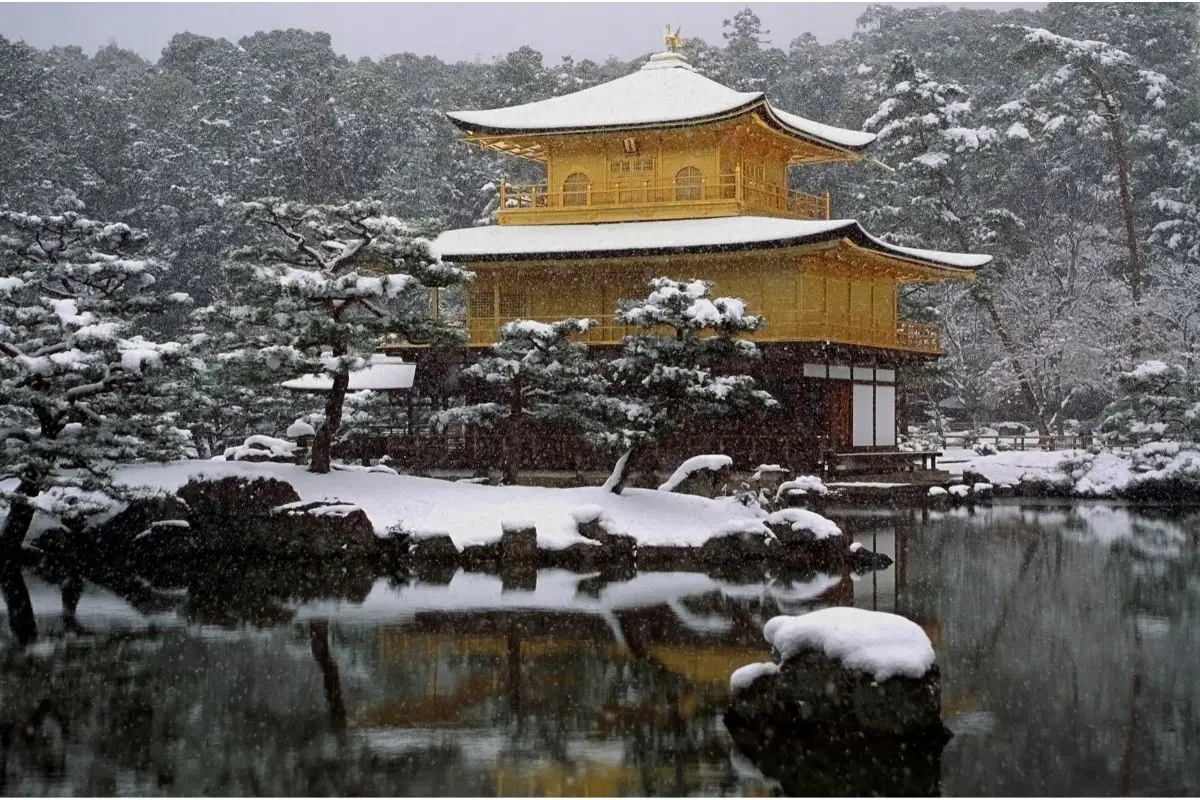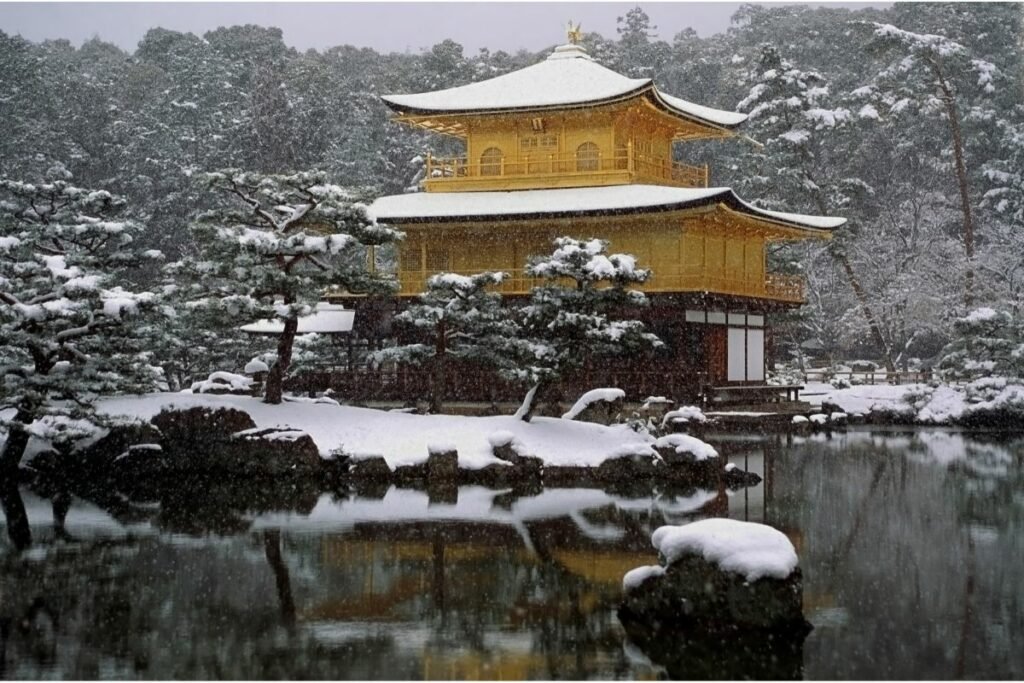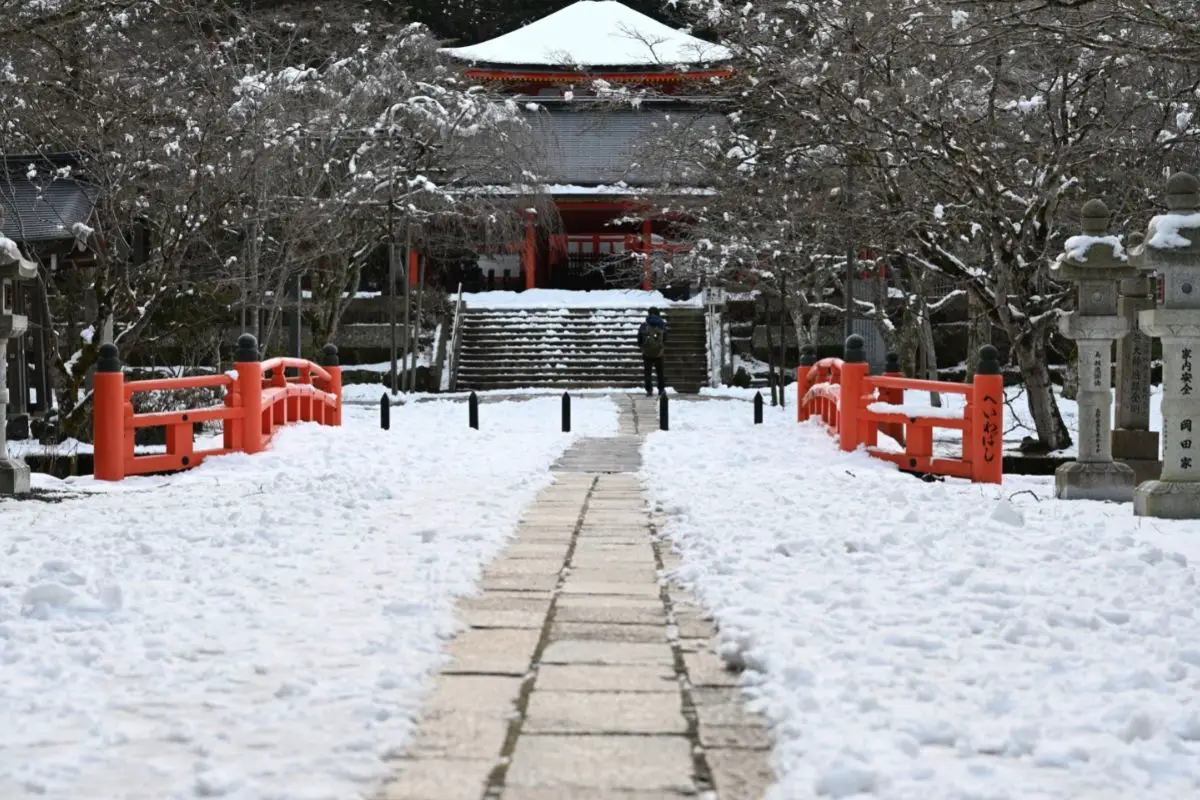Thinking about visiting Japan? Or are you just curious about Japan’s climate, seasons, and temperatures?
Japan is a beautiful country with a vibrant culture and plenty to see, do, and experience – both across its must-visit cities and breathtaking islands.

Due to this, it can make it hard to choose a specific time of the year to visit Japan!
But don’t worry – in this simple guide, we explain the different seasons of Japan, what to do during each season, as well as when you can expect it to be the hottest, coldest, and rainiest.
The Seasons Of Japan
Japan has four seasons, each lasting for three months. These include spring, summer, fall, and winter. Japan also has a dry season and a rainy season, similar to tropical Asian countries like Malaysia, Indonesia, and the Philippines.
Being located in the Northern Hemisphere, Japan has a relatively balanced climate, involving very warm summers and cold winters. The climate (see also ‘What Is The Climate In Japan?‘) also varies across the country, being cooler in the north and warmer in the south.
Depending on which part of Japan you want to visit, the season can be an important factor when it comes to the experiences and sights you want to enjoy!
Winter In Japan
Winter in Japan is from December to February.
Temperatures during this season can range from 30 to 45 degrees Fahrenheit (-1 to 7 degrees Celsius). Winter is the coldest time of the year in Japan, and also the season during which snow can fall across the country (mostly in February), with greater snowfall in its cooler, southern areas.
Winter is a great time to visit Japan to see snow-capped Mount Fuji (see also, ‘Can You See Mt. Fuji From Tokyo‘), go skiing at Yuzawa and Zao Onsen, and visit hot springs of the Kanto region.
It is also the perfect time to bask in the spirit of Christmas in the cities and at the theme parks, such as the Tokyo Christmas Market, Tokyo Disney Resort, and Sanrio Puroland.
Spring In Japan
Spring in Japan from March to May (find out more here, ‘When is Spring in Japan?‘).
Temperatures during this season can range from 45 to 60 degrees Fahrenheit (7 to 15 degrees Celsius). Due to the cooler temperatures (being the second-coldest season of the year in Japan), spring is an ideal time to visit Japan if you like spring festivals and seeing the flowers in bloom.
One of the most unmissable things to see in Japan is the famous cherry blossom trees (see also ‘How Big Do Weeping Cherry Trees Get?‘) that bloom in the spring. On top of that, other reasons to visit Japan in the spring include strawberry picking at Japan’s abundance of strawberry farms, and camping at popular locations – such as Lake Motosuko, Okutama, and Mt Kita.
The numerous things to see and do, as well as the cooler temperatures, make the months of March to May one of the peak periods for tourism in Japan.
Summer In Japan
Summer in Japan is from June to August (find out more here, ‘When is Summer in Japan?‘).
Temperatures during this season can range from 70 to 90 degrees Fahrenheit (21 to 32 degrees Celsius). It goes without saying that summer is the hottest season of the year in Japan!
It can feel quite humid in Japan if you are not used to the heat. It can also be particularly busy in popular tourist sites (compared with the other seasons), where there are plentiful outdoor activities and experiences to enjoy. These include everything from camping and hiking to spending several days at the beach (see also ‘Are There Any Beaches in Japan?‘).
Just a few of the most sought-out beaches in Japan are the various Okinawa beaches, Jodogahama Beach, Zushi Beach, and Odaiba Beach, and the island beaches of Amami Oshima, Miyako, and Tokashiki.
Fall In Japan
Fall in Japan is from September to November (see also ‘When Is Fall In Japan?‘).
Temperatures during this season can range from 50 to 70 degrees Fahrenheit (10 to 21 degrees Celsius). During fall, temperatures are slightly higher than the temperatures in spring. And due to this, fall is one of the most popular times to visit Japan (when is fall in Japan? Read here to find out).
Even in September, Japan can feel like it is still in its summer season. And just like spring, it’s a great time to go camping, hiking, and sightseeing – both in the city and out. The cooler temperatures also offer the perfect reason to head out on day trips, which happens to make October and November one of Japan’s peak tourist periods.
As fall is when the famous cherry blossom trees lose their flower petals, this is another popular natural attraction to see each year.
Rainy Season In Japan (Tsuyu)
Like its Southeast Asian counterparts, Japan has a rainy season – although it does not last as long.
The rainy season, known as tsuyu in Japan, as well as the “plum rain” season, lasts from June through to July. This is during summer where, despite being the hottest season of the year, it is also when Japan receives the most rainfall, specifically in the middle of the summer.
Rainfall is heaviest and most consistent during this period, especially in Yakushima and Kyushu – islands in the south of Japan that are known for being the wettest locations in the country (see also, ‘What is Japan Known for?‘).
Similarly, Japan’s rainy season is also when the country experiences the most typhoons during the year.
Dry Season In Japan
Despite Japan having a rainy season with its own name (tsuyu), Japan’s dry season is not generally called “dry season”. If referred to, the dry season would mark all the months of the year that are separate from the rainy season, i.e., the months of June and July.
This includes spring, fall, and winter. Spring and fall are popular seasons to visit Japan due to the lack of rainfall, with December mostly being the driest time of the year across Japan, including Kyoto, Osaka, Tokyo, and Hiroshima (see also’Do People Live in Hiroshima?‘).
Conclusion
In short, Japan has four seasons: winter, which lasts from December to February; spring, which lasts from March to May; summer; which lasts from June to August; and fall, which lasts from September to November.
Each season in Japan presents a variety of things to see and experience. The most popular seasons to visit Japan, however, include spring and fall, during which the temperature is cooler with little rainfall.









